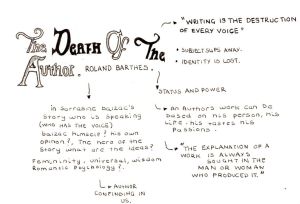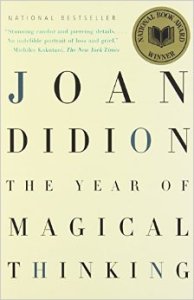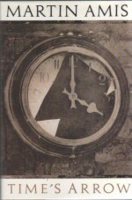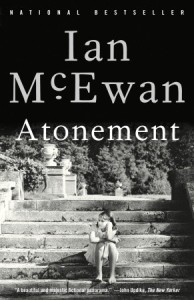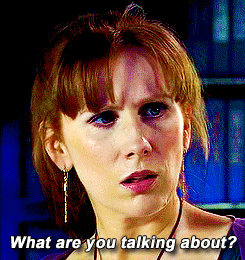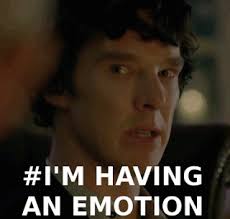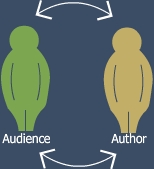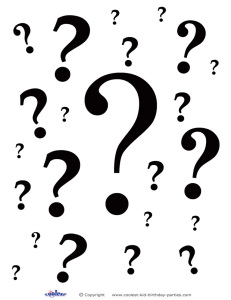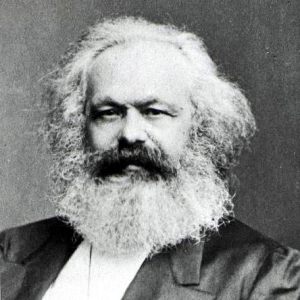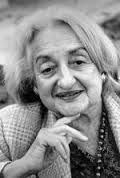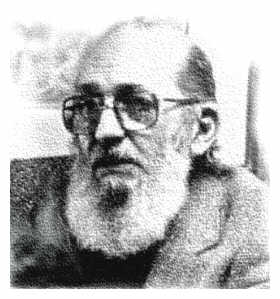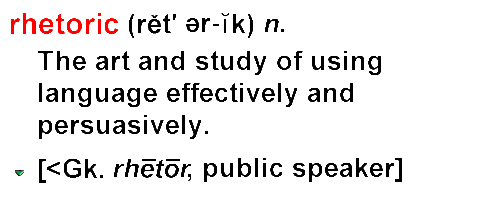On November 19, 2014, Ursula Le Guin said in her acceptance speech for the National Book Awards honor of Distinguished Contribution to American Letters, “Right now, I think we need writers who know the difference between the production of a market commodity and the practice of an art” (“The 2014 Medalist”). These words validate the very study of all literatures because we must continue to hold up literature that challenges our culture beyond its lucrative market appeal and conveys artistry through the articulation of human experience, knowledge, history, culture, and imagination. In the view of this rhetorical narrative theorist, stories act upon us by cultivating language, by examining and critiquing history, by holding up our cultural values to literary scrutiny, and because, most significantly, they are a dialogue between the reader, the author, and the imagination. Rhetorical theorists focus on that relationship because it considers all the ways texts move us, and because an understanding of rhetorical choices by the implied author allows us to share our experiences with a broader audience of readers.
This is very meaningful to me, because of my own personal history. I grew up very poor, sometimes abjectly poor, in a small rural town in Vermont. I don’t remember why or how, but I gravitated to books. I ate up books and they captured my imagination in ways that no real world experience did. I remember our middle school librarian holding onto books for me, when she realized how much I read, and recommending this one or that one. I read A Tree Grows in Brooklyn several dozen times. I related to that poor Brooklyn girl. I read Second Star from the Right, a book about anorexia, and understood the need for control (I was not and did not become anorectic) but was really fascinated by the idea that you have enough food to refuse to eat it. What a concept! Without books I surely wouldn’t be here, writing this paper for a doctoral-level course, but would likely have followed the trajectory of most of my family, which is both noble in its focus on survival and ignoble in that survival was really the only goal, not any different from most poor families. I would take any free books offered, and this is how I first read Homer, The Illiad and The Odyssey, when I was twelve. How magical they were, but I didn’t really understand them then. But I learned about gods and goddesses and war and lies and deceit. I learned that there was more. I learned that more wasn’t necessarily better. But I was just a child and it took me a long time to get here, a lot of deliberation of what I could really do as a scholar. I am afraid of being just a scholar.
As such, I see my role as a rhetorical narrative theorist as a researcher of affect, who enables broad categories of audiences to contemplate the affective experience of a work of literature, and to understand it from both a cultural sense of identity and from an individual sense of feeling and experience. This means encouraging a sense of readerly theory and to open discourses on the importance of stories, and their ability to affect rhetorical action, out beyond the halls of academia. As I note in my paper, “Stories that Move Us: Narrative Texts as Rhetorical Objects of Study,” this also means a consideration of “what texts in particular are the focus of rhetorical study, and why,” because genre certainly has been a limiting and exclusive domain of scholars, when we exclude work from outside our field and where lesser studied forms, such as popular literature like romance, science fiction, or fantasy, from the classroom or from literary theory. An example of how exclusive genre can be is discussed in PAB Post #7, as I explore Sarah Copland’s argument that short story theorists tend to exclude all other theoretical approaches because they argue that the short story form is so unique that other methodologies would somehow corrupt its interpretation and analysis. The short story form itself seems to suffer, by correlation, this narrow view of itself, as it is widely acknowledged in publishing markets that short story collections do not sell, especially not for little-known authors. There seems to be a wide chasm between scholarly interpretation and theory and lay audiences (even among the rhetorical theorists I’ve studied, who argue for readerly experience as valuable for narrative mean-making and yet rarely consider them in their research). It is perhaps here where I will find my niche.
Reading a book is much more than a form of escapism, though its value as a creator of worlds and means of communication between authors with a story to tell and reading communities who need stories is certainly important. But more than that, books create meaning, they provide cultural contexts, they imagine possibilities, they open paths to knowing something you wouldn’t otherwise know: science, math, space, love, pain, death, war, poverty…these things are knowable through narratives, the stories we tell. And as we study how they affect us, what intentions the implied author (which is the persona, or second self, that the real author affects as the writer/narrator of the story; the implied author makes the rhetorical choices of the character, the events, the action, progression, and judgments that act upon the reader, they are the teller talking to the told.). But can we trust these texts? Are they real knowledge? Or, as Dr. Heller asked in my interview with her: Do they shape culture, or are they shaped by culture? This is where narrative theorists come in. We analyze the impact of texts through various lenses (including formalist, cognitive, feminist, race/culture, postmodern and more), in an effort to understand their influence, the role of the author and how the author views the world (or mythologizes certain worlds, leaving out the bad and emphasizing the good – Shen). We might accept otherwise unacceptable ideas through literature (thinking of Nabokov’s Lolita) which seeks to investigate moral limits in relationship to real world ethics. Nabokov, as the narrator in his role as implied author, finds Humbert Humbert to be not just disingenuous, but genuinely convinced of the rightness of his relationship with Lolita. Nabokov was following the narrative of a true story, and, by fictionalizing it, was able to question the morality of the actors involved, test the motives of the implied author (as someone who has a story to tell and decides how it must be told), and consider the reaction of his audience, how to manipulate their experience without overt manipulation – a true art. Of course, it was widely rejected as smut, but did eventually find distribution. And why would we read this story, about an older man kidnapping, holding hostage, and raping an eleven-year old girl? Keeping her captive for two years and even maintaining a relationship with her, once she had run off with another older man? Today, this book tops many best books list. It is important as theorists to not just accept it as a piece of fictional material, but as a commentary on morals, on us, on our values, on the vagaries of life. Without thought and analysis, readers may only find the surface of such texts, and not the meaning, like my adolescent self. My interest, and how I see myself, is in bridging these experiences.
With stories, we are able to be genuinely empathetic to others when we can have no way of experiencing their worlds, such as in Toni Morrison’s Beloved. Sethe’s choice (if it was a choice) to kill her daughter and the context and consequences of that act would have never been understood as a real event. Morrison rhetorically acts upon us as the implied author, who has designs on our emotions and provides us with the ability to understand a certain moment in time and a certain person’s view of that time, the impossibility of it and yet the reality of it. It becomes real even as it stands as fiction. It also becomes safe. It’s safe to address wrongs, to question things, and to critique ourselves, in fiction. It’s safe, through nonfiction, to remove ourself from our life (as Phelan examines in Didion’s The Year of Magical Thinking, which I analyze in PAB Post#8, or, “In Defense of the Implied Author, Intentionality: The Case of the Nonfiction Narrative.”) and examine it. And scholars examine that examination. A reader who affects judgment of Sethe, or Didion, does so through the subtle rhetorical movements of the author. Morrison’s implied author does not judge Sethe, but she sets us up to make up our own minds about Sethe’s story, guides us to certain ways of experiencing the possibilities.
Meredith Privott raised the idea of listening, and having good intentions, especially when you are seeking to penetrate a field of study that belongs to a certain community, in her case, an ethnic community with very embattled history and a very legitimate concern for its representation. In many ways, this is what all of us should remember as we enter our various fields: listening, having good intentions, and respecting that we are conduits that may contribute to how our objects of study are represented. We are not tourists, but purveyors of knowledge. We have to expect to be challenged and to be able to respect alternate positions, like we teach our own students. And in narrative theory, the debates rage as fiercely as they do throughout the academy. In English Studies, there is the sense that we are preserving our disciplinary elbow room, and to allow in other views threatens that space.
So who am I as a scholar, and where do I see myself fitting into the field of narrative theory? Well, in many ways I don’t see myself fitting in as much as figuring out my own space. I recognize that there are conventions of academia and scholarship, and I respect those while also feel frustrated by them. I respect the debates and am not sure at this moment how I will enter them, there are times when I feel that many of the debates seem pedantic, and yet, without debate there would be little progress, especially the question of author intentionality, which I see as still relevant (or at least, still a debate) and which I am interested in as I consider the position of the author/reader relationship. While at times I feel the debates can muddy the waters for those who are outside the academy, and lend credibility to those who are critical of our internal bickering. Necessarily though, debate leads us to consider new and critical ways of seeing, and had not largely New Criticism died out in the 60’s, we wouldn’t be stridently defending and appreciating (implied) author intentionality today.
Who is questioning our legitimacy more loudly than us? And here is where I see clear areas that need to move beyond debate and beyond suggestion and beyond theory, and into practice. To me, this means how we bridge the ivory tower and the real world. Why and to whom does it matter if Kate Chopin is mythologizing white antebellum southern culture as benevolent and gracious in her short story “Desiree’s Baby”? Why and to whom does it matter to the reader, to the student, to a little girl reading A Tree Grows in Brooklyn, that imagination and experience can be deliberate acts of storytelling? I, or we, understand through stories that life is unfair, that happy endings are more the realm of the imagined than the known, that there is beauty and magic that lives alongside pain and cruelty. This is where we learn ambiguity and complexity, and can embrace them. Here is where I want to be, as the person who studies and articulates the meaning of stories for the world, who investigates how stories – from ancient folklore, where meaning was truly made, to modern novels, where meaning is too often confined to literary criticism and sometimes the classroom (though one wonders how meaningful these texts are made for our students) – move us, make meaning, are critical to fostering imagination and progress in ways that science and technology could never do alone.
I’ve been thinking of proposing a course, which I mentioned in passing in class a week or so ago, called Investigating the Science in Science Fiction. I love sci-fi and steampunk literature, which has often existed in the literary margins, until perhaps the last decade. It is in the margins where I believe the bridge can be built. Many times the novel has been declared dead, most recently (to my knowledge) by author Will Self, in a lecture give on May 6 of this year at Gulbenkian theatre, St Cross Building, Oxford. He clarifies his obituary of the novel by explaining that “the serious novel will continue to be written and read, but it will be an art form on a par with easel painting or classical music: confined to a defined social and demographic group, requiring a degree of subsidy, a subject for historical scholarship rather than public discourse. The current resistance of a lot of the literate public to difficulty in the form is only a subconscious response to having a moribund message pushed at them” and by this he means that we have taken ourselves too seriously and made the form too fatal to enjoyment: we have lifted the novel and the art of storytelling beyond the simple pleasure it gives, the imaginative experience it could be, to be a form that must be analyzed and probed and understood and lauded in certain ways. This is why our students sigh at Shakespeare, balk at Hawthorne or Woolf or Joyce. This is why affect is critical, to bring literature back to life as something that is experienced, as something felt.
I conclude with the words of Ursula Le Guin, who challenges the idea that literature must prove its legitimacy by this simple statement: “Any human power can be resisted and changed by human beings. Resistance and change often begin in art, and very often in our art—the art of words.” English studies, and the study of literary texts, offer us the chance to change the world. How stories bring change can be fostered by the work of scholars but I believe we must not forget that without considering readers, non-scholarly readers, our work is illegitimate. This chasm invites an opportunity for all of us, emerging scholars, to take up the challenge of meaning-making beyond academia. What might it take for a new generation of scholars, and I count myself, to revive the study of rhetoric, literature, English Studies, and all the humanities?
***********************************
Works Cited:
Dalley, Julie. “Aristotle, Redux: Defending and Expanding Neo-Aristotelian Critical Theory.” 7 Oct. 2014. Web.
——–“Rhetorical Narrative Theory and Short Story Theory: Together At Last?” 28 Oct. 2014. Web.
——–“Rise and Fall, and Rise Again: Debating the “Social Turn” in Rhetoric and Composition Studies.” 30 Sept. 2014. Web.
——–“Stories That Move Us: Narrative Texts as Rhetorical Objects of Study.” 23 Oct. 2014. Web.
Le Guin, Ursula. “Acceptance Speech for the 2014 Medalist for Distinguished Contribution to American Letters.” National Book Foundation. 19 Nov. 2014. Web. 2 Dec 2014. <http://www.nationalbook.org/amerletters_2014_uleguin.html#.VHUW5ocUqT8>
Phelan, James. “The Implied Author, Deficient Narration, and Nonfiction Narrative: Or, What’s Off-Kilter in The Year of Magical Thinking and The Diving Bell and the Butterfly?” Style 45.1 (Spring 2011): 119-137. Print.
Self, Will. “The Novel Is Dead (This Time It’s For Real).” Guardian UK. 2 May 2014. Web. 2 Dec. 2014. <http://www.theguardian.com/books/2014/may/02/will-self-novel-dead-literary-fiction?CMP=twt_fd>
Shen, Dan. “Neo-Aristotelian Rhetorical Narrative Study: Need for Integrating Style, Context, and Intertext. Style 45:4 (Winter 2011): 576-597. Print.Ursula Le Guin Acceptance Speech, November 19, 2014.




